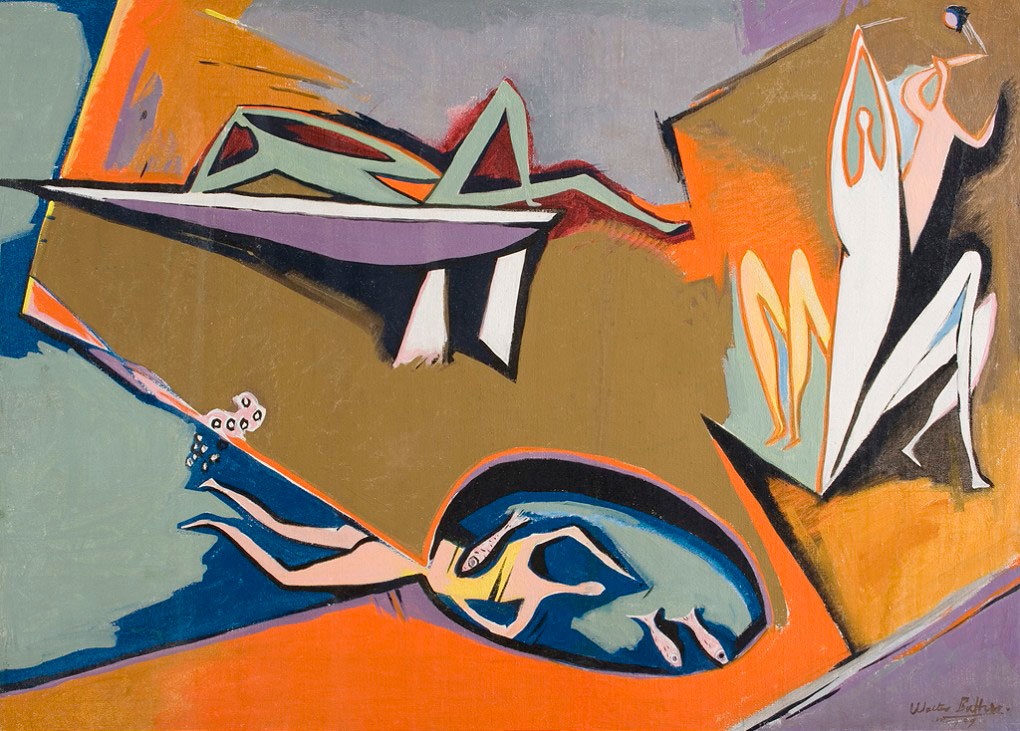Walter Battiss

Swimmers and Fish in a Pool prefigures the artist’s early experiments in abstraction and marks his lasting departure from realism. With bold colours and an economy of line, the painted scene synthesises influences and styles from both southern Africa and Europe. Battiss’ preoccupation with indigenous rock art is reflected in his simplified figuration and the insistent flatness of the picture plane. It is among the first of many paintings to take as subject the sea, and his later works would return often to the motifs of swimmers, rock pools and fish. Such compositional repetition allowed the artist to pursue formal concerns as variations on the same theme. Swimmers and Fish in a Pool signals – in the words of art historian Karin Skawran – the beginning of Battiss’ “intuitively modernist approach," which would come to characterise his oeuvre.
b.1906, KwaNojoli; d.1982, Port Shepstone
Walter Battiss remains an enduringly enigmatic figure in South African art history. He is notable for his inconstant and various mediums – including, among others, watercolour, oils, silkscreen, ceramics, and sculpture – and for the collision of influences in his work. In pursuing a new African modernism, Battiss experimented with such seemingly incongruent styles as Post-Impressionism and Pop Art, paired with formal elements borrowed from San rock paintings, Arabic calligraphy and Ndebele beadwork. While the artist described himself as the “first neo-primitive in South Africa”, others variously classed him a “gentle anarchist,” “amateur anthropologist,” “paunchy painter-poet,” and “wandering nude.” Battiss is remembered today as King Fern of Fook Island, a utopian, sub-tropical destination of his own imagining.